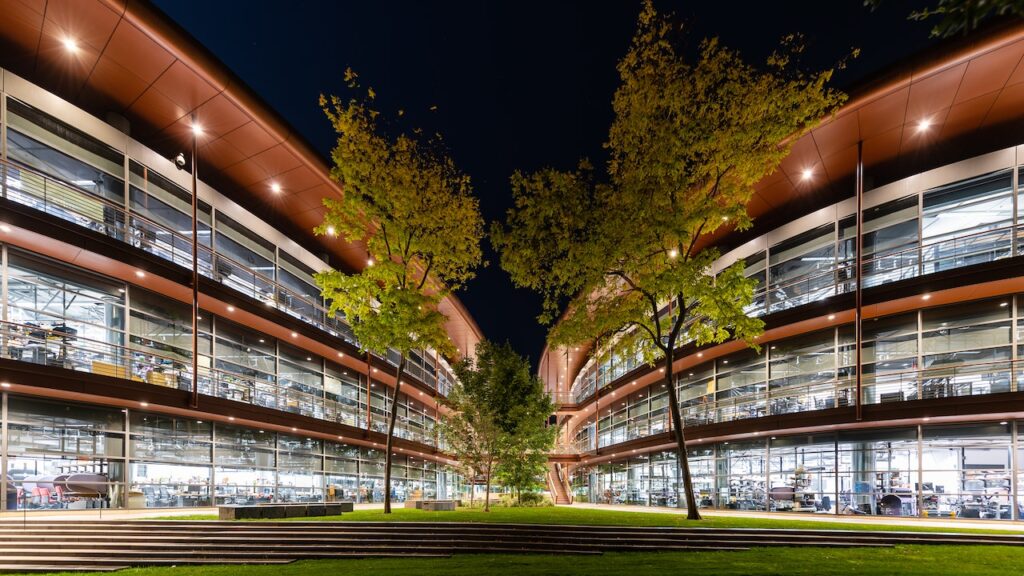Welcome to our blog post on campus design thesis, where creativity meets educational spaces! In this article, we will explore the captivating world of campus design and provide valuable insights to architecture students embarking on their campus design theses. From fostering learning environments to promoting sustainability, campus design plays a pivotal role in shaping the educational experience. Join us as we unravel the key aspects of crafting an exceptional campus design thesis, showcasing your design prowess and commitment to creating inspiring and functional spaces for students, faculty, and the community.
Understanding Campus Design :
Gain a comprehensive understanding of campus design and its importance in creating vibrant and functional educational spaces. Explore the unique challenges and considerations involved in designing campuses, such as spatial planning, connectivity, sustainability, and human-centric design principles. Understand the various components that make up a campus, including academic buildings, student amenities, outdoor spaces, and circulation pathways.
Researching Educational Needs and Pedagogical Approaches for Campus Design Thesis:
In the realm of architecture and design, crafting a campus design thesis goes beyond mere aesthetics; it becomes a holistic endeavor aimed at addressing the educational needs and aspirations of the institution it serves. The significance of thorough research in this process cannot be overstated. It is the foundation upon which every design decision rests, ensuring that the resulting campus environment is not only visually appealing but also functional, efficient, and conducive to learning.
At the core of researching for a campus design thesis lies the exploration of the educational needs and goals of the institution. Understanding the specific requirements and aspirations of the educational community for whom the campus is being designed is paramount. This entails delving into the institution’s mission, vision, and values, as well as engaging stakeholders such as students, faculty, administrators, and community members in dialogue to gather insights into their expectations and aspirations for the campus environment.
Moreover, a comprehensive examination of different pedagogical approaches and teaching methodologies is essential. In today’s dynamic educational landscape, traditional teaching methods are giving way to more interactive, experiential, and collaborative approaches. By studying emerging trends in education, such as project-based learning, flipped classrooms, and interdisciplinary studies, designers can glean valuable insights into the spatial requirements and configurations that can best support these innovative teaching practices.
Furthermore, it’s imperative to recognize the evolving nature of education and its implications for campus design. As technology continues to reshape the way we learn and interact, campuses must adapt to accommodate new modes of learning and collaboration. Flexible spaces that can easily be reconfigured to accommodate different activities, integrated technology infrastructure to support digital learning tools, and sustainable design principles that promote environmental stewardship are just a few examples of how campus design can evolve to meet the changing needs of education in the 21st century.

Creating Functional and Inspiring Spaces: Campus design Thesis
Creating functional and inspiring spaces for campus design entails a thoughtful and strategic approach that goes beyond the mere physical layout of buildings and facilities. It involves a deep understanding of the needs, aspirations, and behaviors of the diverse individuals who will inhabit and interact within the campus environment.
Functionality in campus design revolves around ensuring that spaces are purposeful and conducive to the activities they are intended to support. This includes careful consideration of factors such as spatial organization, circulation patterns, accessibility, and ergonomics. Functional spaces are efficient and intuitive, allowing students, faculty, and staff to navigate the campus easily and engage in various activities seamlessly. Moreover, they are adaptable and flexible, capable of accommodating diverse uses and evolving needs over time.
In addition to functionality, creating inspiring spaces is essential for fostering a sense of belonging, creativity, and well-being among campus occupants. Inspirational spaces are designed to evoke a sense of wonder, curiosity, and motivation, stimulating intellectual inquiry and artistic expression. They may incorporate elements such as natural light, vibrant colors, greenery, and innovative architectural features to create uplifting and inviting environments. Inspirational spaces also provide opportunities for serendipitous encounters, collaboration, and social interaction, fostering a sense of community and connection among individuals within the campus community.
Furthermore, the design of inspiring spaces should reflect the institution’s mission, values, and identity, serving as physical manifestations of its ethos and aspirations. Whether through the incorporation of symbolic elements, cultural references, or sustainable design principles, inspirational spaces contribute to shaping the campus’s unique character and identity.
Ultimately, creating functional and inspiring spaces for campus design requires a holistic approach that integrates both practical considerations and aspirational goals. By prioritizing functionality alongside inspiration, designers can craft campus environments that not only meet the functional needs of the institution but also inspire creativity, collaboration, and a sense of belonging among its inhabitants.
Also read 10 Outstanding Topics for Architecture Thesis on Social Issues to create better world
Embracing Sustainability and Green Design : Campus design Thesis
Examine the role of sustainability in campus design and the integration of green design principles. Explore strategies for energy efficiency, water conservation, use of renewable materials, and implementation of green infrastructure within the campus. Discuss the importance of designing sustainable campuses that contribute to a healthier environment and inspire environmental awareness among students and the community.
Addressing Connectivity and Technology:
Delve into the realm of connectivity and technology in campus design. Explore strategies for creating a digitally connected campus with seamless Wi-Fi, smart classrooms, and advanced technology infrastructure. Discuss how technology can enhance learning experiences, facilitate communication, and support the evolving needs of the educational institution.
Fostering Community Engagement and Campus Identity : Campus design Thesis
Reflect on the importance of fostering community engagement and campus identity in your campus design thesis. Explore strategies for creating spaces that promote social interaction, student involvement, and a sense of belonging. Discuss the role of campus amenities, cultural centers, and outdoor gathering areas in creating a vibrant campus community.
Crafting a campus design thesis offers an incredible opportunity to combine creativity, functionality, and educational aspirations. By understanding the significance of campus design, conducting thorough research, embracing sustainability and technology, and fostering community engagement, you can create a thesis that not only showcases your architectural skills but also contributes to the creation of inspiring and inclusive educational environments. So, let your imagination soar as you embark on this transformative journey of designing campuses that empower students, foster learning, and shape the future of education.

